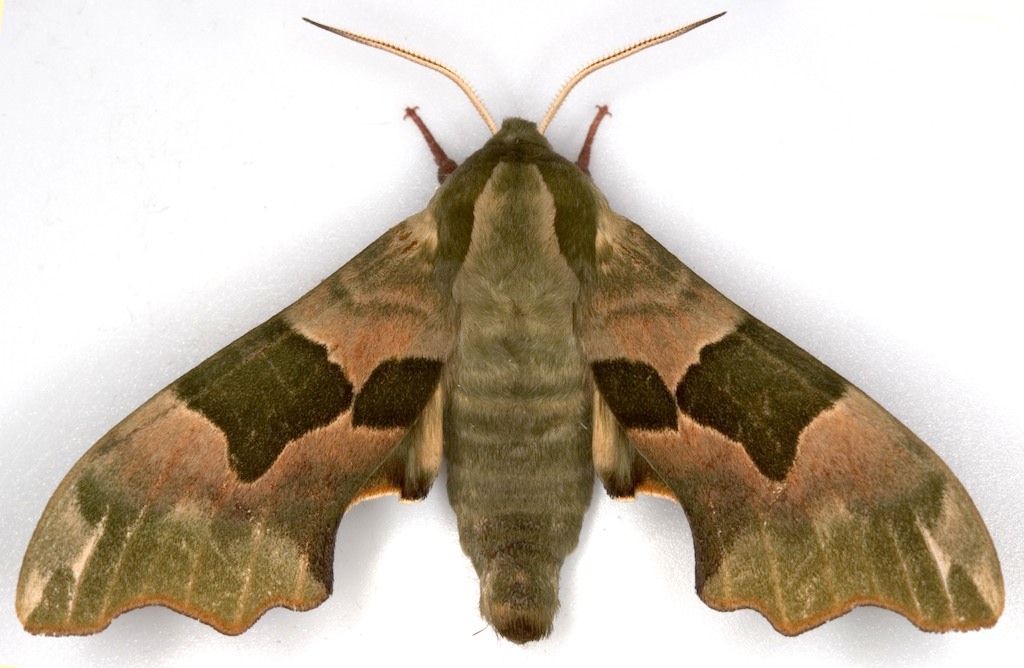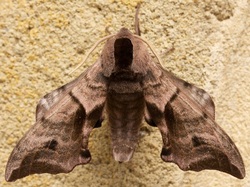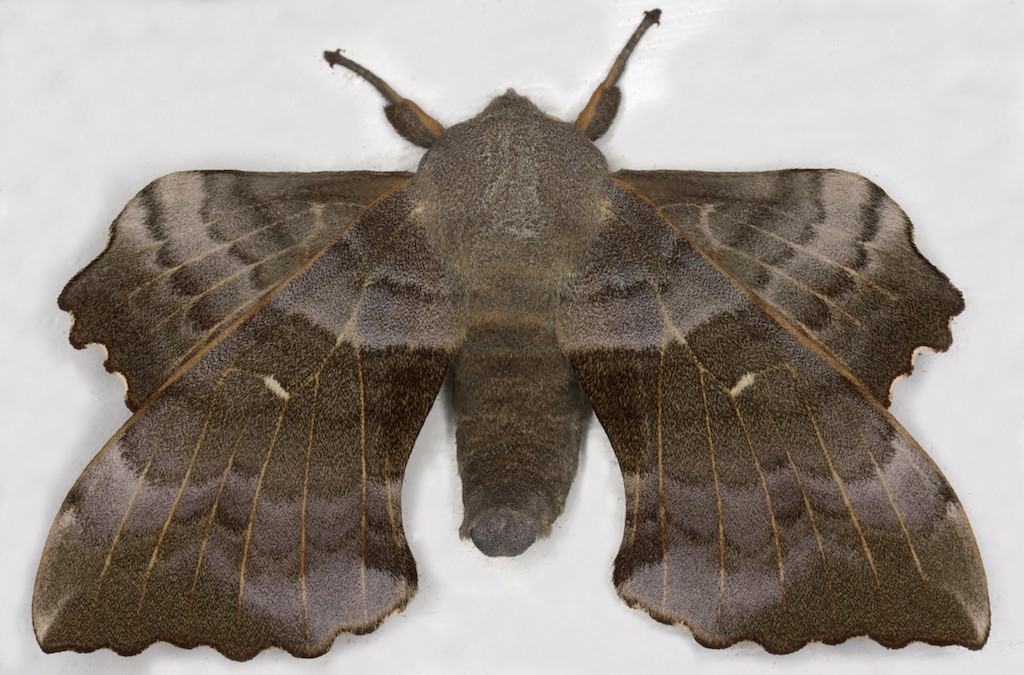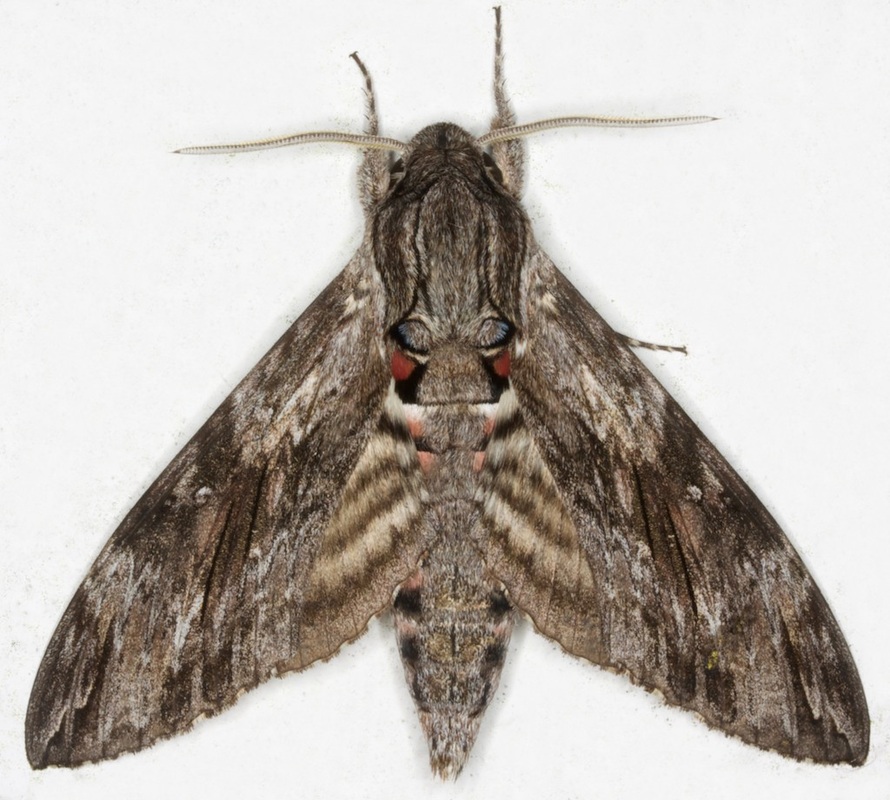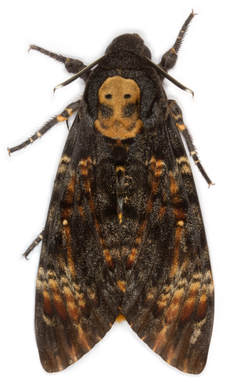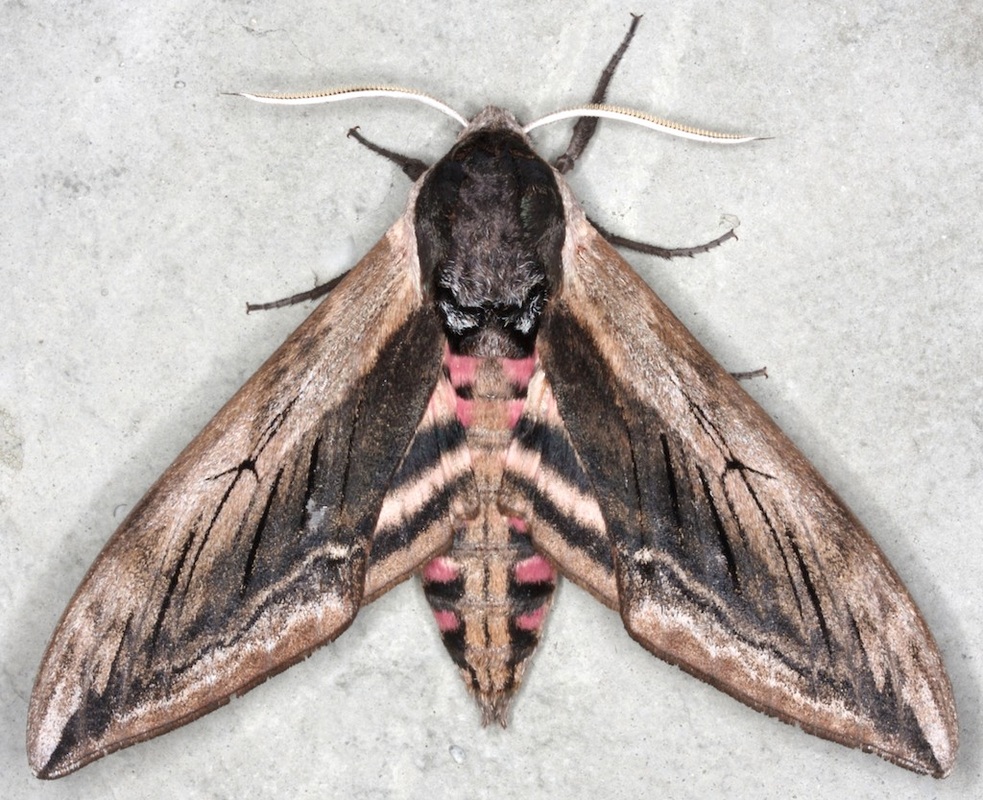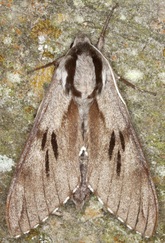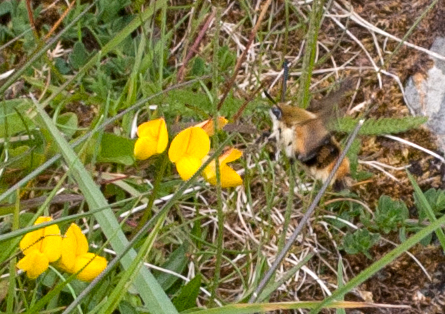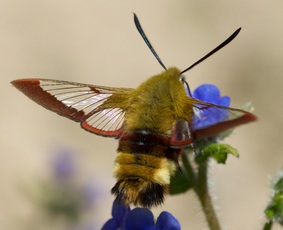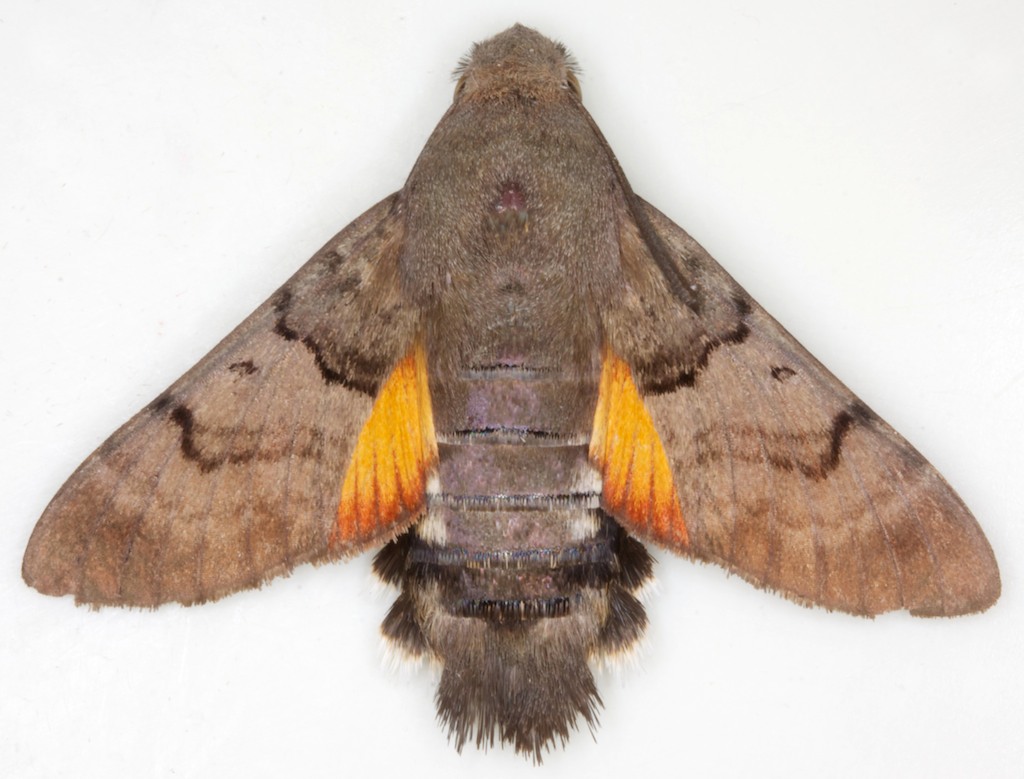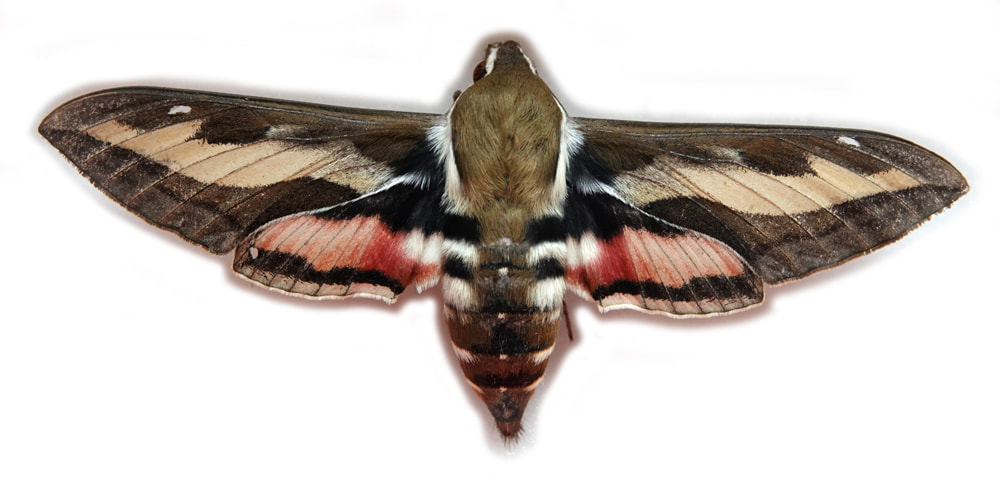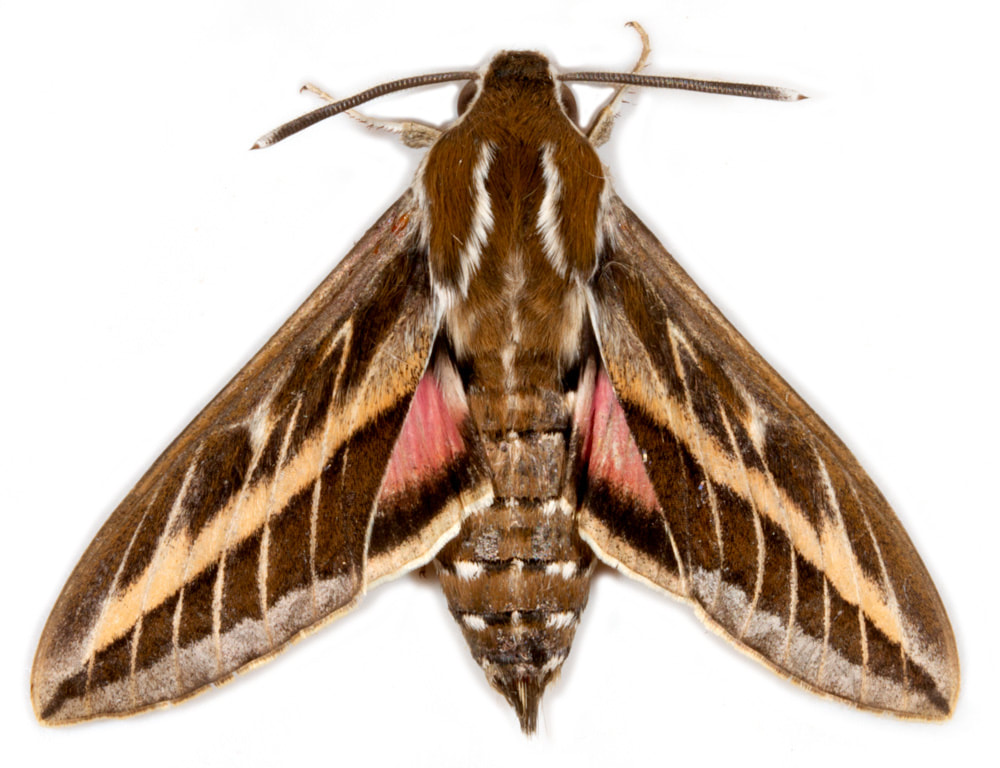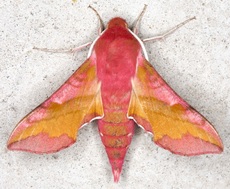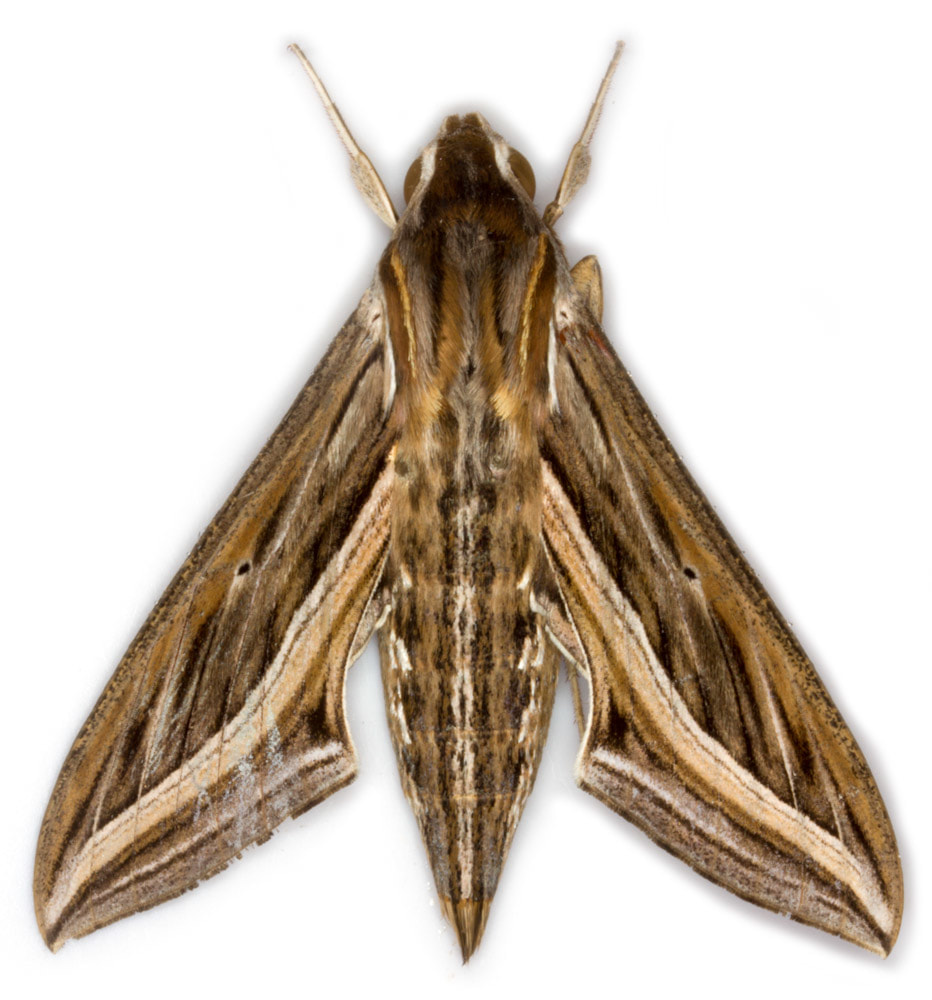Proboscis short to very long, unscaled. Antenna ~ 1/2 length of forewing; fasciculate or pectinate in male, simple in female; apex pointed.
Labial palps long, 3-segmented. Eye large. Ocelli absent.
Forewing long, slender. Hindwing ±triangular. Frenulum and retinaculum usually present but may be reduced. Tegulae large, prominent.
Leg spurs variable but always present on midtibia. 1st tarsal segment of mid and hindleg about as long as tibia.
Labial palps long, 3-segmented. Eye large. Ocelli absent.
Forewing long, slender. Hindwing ±triangular. Frenulum and retinaculum usually present but may be reduced. Tegulae large, prominent.
Leg spurs variable but always present on midtibia. 1st tarsal segment of mid and hindleg about as long as tibia.
Subfamily: Smerinthinae (3G 3S)
Tribe: Smerinthini
Probably characterised by a short proboscis and reduced or absent frenulum
Tribe: Smerinthini
Probably characterised by a short proboscis and reduced or absent frenulum
Subfamily: Sphinginae (3G 4S)
Rest with wings in tectiform position
Tribe: Acherontiini
Rest with wings in tectiform position
Tribe: Acherontiini
|
Tribe: Sphingini
Sphinx (2S) 006 Sphinx ligustri (Privet Hawkmoth) |
007 Sphinx pinastri (Pine Hawkmoth) |
Subfamily: Macroglossinae (2T 7G 11S)
Long proboscis, feed while hovering, diurnal
Tribe: Diplophonotini
Much of wing membrane unscaled
Hemaris (2S)
Long proboscis, feed while hovering, diurnal
Tribe: Diplophonotini
Much of wing membrane unscaled
Hemaris (2S)
Tribe: Macroglossini
|
Macroglossum
010 Macroglossum stellatarum (Hummingbird Hawkmoth) |
Daphnis
011 Daphnis nerii (Oleander Hawkmoth) fw: 48-51mm; rare but almost annual migrant mainly to S.England Aug-Oct. |
Proserpinus
012 Proserpinus proserpina (Willowherb Hawkmoth) Rare migrant with 3 British records. Note that under the EU Habitats Directive it would be illegal to retain a specimen if caught anywhere in the EU - the legal prohibition covers possession and sale. Whether such a prohibition would persist post-Brexit is moot. |
Hyles (3S)
